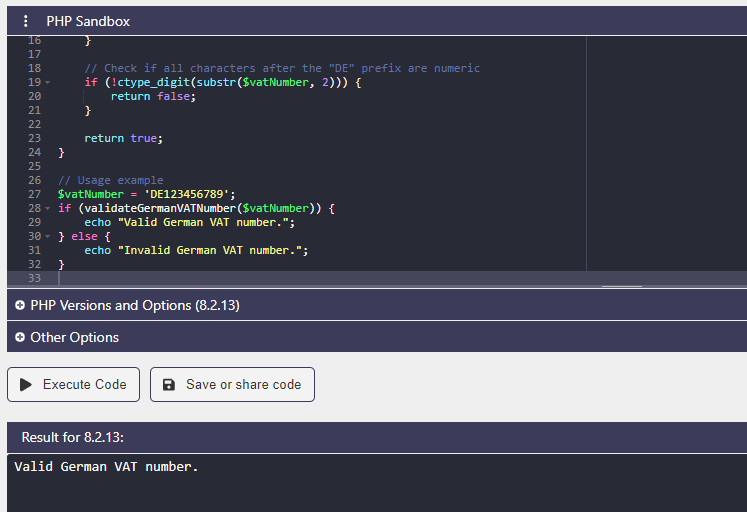PHP
How to validate a German VAT (Value Added Tax) number format in PHP?

How to validate a German VAT (Value Added Tax) number format in PHP?
German VAT number validation in PHP
Validating a German VAT (Value Added Tax) number format is an essential task when dealing with financial transactions in Germany.
In PHP, you can implement a reliable validation process to ensure that the provided VAT number adheres to the correct format.
This article will guide you through the steps of validating a German VAT number using PHP, ensuring compliance and accuracy.
To begin, it’s important to understand the structure and format of a German VAT number. The German VAT number, also known as Umsatzsteuer-Identifikationsnummer (USt-IdNr) or Umsatzsteuer-ID, consists of nine digits and always starts with the prefix “DE.” The following digits after the “DE” prefix represent the unique identification number assigned to each registered German business entity for VAT purposes.
Now, let’s dive into the PHP code that validates the German VAT number format:
<?php
function validateGermanVATNumber($vatNumber)
{
// Remove any whitespace and convert to uppercase
$vatNumber = strtoupper(trim($vatNumber));
// Check if the VAT number starts with "DE"
if (substr($vatNumber, 0, 2) !== 'DE') {
return false;
}
// Check if the VAT number has exactly nine digits after the "DE" prefix
if (strlen($vatNumber) !== 11) {
return false;
}
// Check if all characters after the "DE" prefix are numeric
if (!ctype_digit(substr($vatNumber, 2))) {
return false;
}
return true;
}
// Usage example
$vatNumber = 'DE123456789';
if (validateGermanVATNumber($vatNumber)) {
echo "Valid German VAT number.";
} else {
echo "Invalid German VAT number.";
}
?>In the above code, we have a validateGermanVATNumber function that accepts a VAT number as input and returns true if the provided VAT number is valid, and false otherwise.

The function first trims any whitespace from the input and converts it to uppercase for consistent processing. It then checks if the VAT number starts with the “DE” prefix. If not, it immediately returns false, indicating an invalid VAT number.
Next, the function verifies that the VAT number has exactly nine digits after the “DE” prefix. If the length is different, it returns false.
Finally, the function uses the ctype_digit function to check if all the characters after the “DE” prefix are numeric. If any non-numeric character is found, it returns false.
To test the validation, you can replace the $vatNumber variable with different VAT numbers in the validateGermanVATNumber function call.
By incorporating this PHP code into your projects, you can ensure that the German VAT numbers provided by users meet the required format. This validation process will enhance the accuracy and reliability of your financial operations in Germany.
Remember to handle the validation results appropriately based on your project’s requirements.
Related searches: How to validate a German VAT (Value Added Tax) number format in PHP?
PHP VAT number validation, German VAT number format, validate VAT numbers in PHP, PHP VAT number validation code, PHP VAT number validation function, VAT number validation in PHP, German VAT number validation, PHP VAT number checker, validate German VAT numbers in PHP, VAT number format validation in PHP, PHP VAT number regex, PHP VAT number validation algorithm, check German VAT number format in PHP, validate VAT ID in PHP, PHP VAT number verification, validate VAT numbers using PHP, PHP VAT number validation tutorial, PHP VAT number validation example


